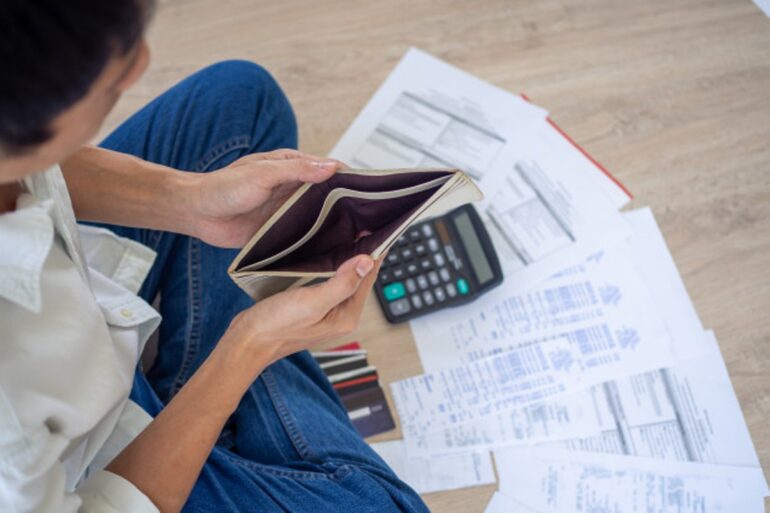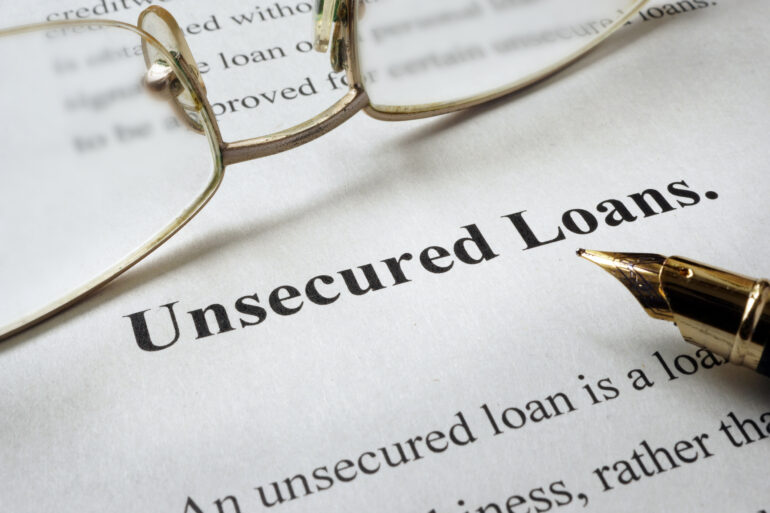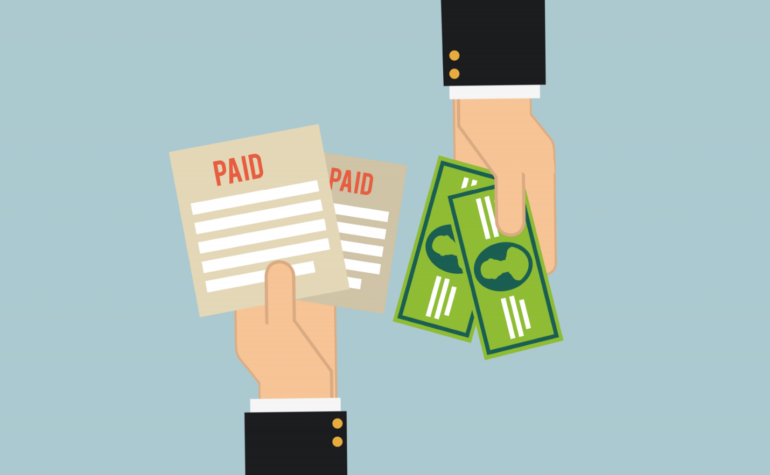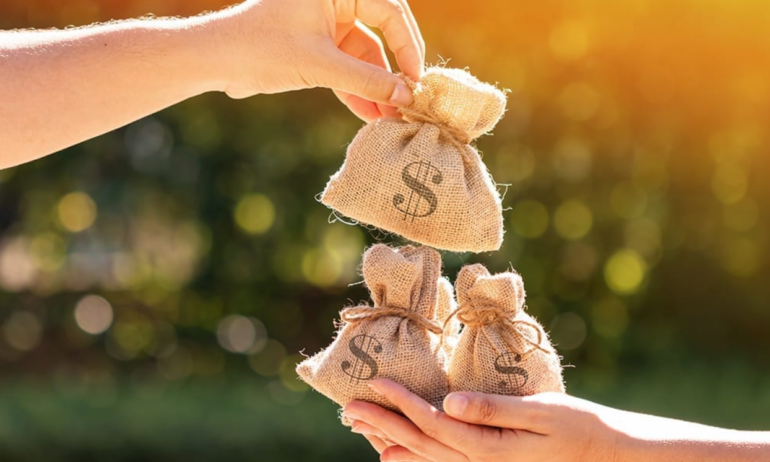Unsecured loans, often known as good faith or signature loans, do not need collateral. Personal loans, education loans, and credit card cash advances all fall under the umbrella of “unsecured loans.” Loans of this kind are widely available from banks, financial institutions, and even the government, and the application procedure is often less stringent than for secured loans.
Loans With and Without Security

When compared to secured loans, the higher risk of default on an unsecured loan is due to the lender’s inability to seize collateral in the event of borrower failure. When making unsecured loans, financial institutions like banks and credit unions like to have a better credit score to reduce their risk. The interest rates and conditions of unsecured loans are often greater than those of their secured equivalents.
The Mechanisms of Unsecured Loans
You may spend the money from an unsecured loan on whatever you choose, usually between $1,000 and $100,000. Loan durations typically last between two and seven years, and interest rates average from 6%-36% per year. Borrowers should shop around for loans that best suit their requirements since loan amounts, interest rates, periods, and permissible uses vary by institution.
If you’re looking to compare rates without filling out several applications or through multiple rigorous credit checks, prequalification services offered by many lenders online are a great option.
Borrowers may be able to submit an application for a loan and obtain a lending decision entirely online in certain cases. Moreover, since borrowers of unsecured loans are not required to provide collateral, they need not submit to an assessment or provide any other proof of the worth of their possessions.

Unsecured loans are given all at once after approval, and all of the interest is charged from the start. Interest is only charged on the outstanding amount of an unsecured credit card or other line of credit, giving the borrower flexibility to utilize the funds as they see fit without worrying about prepayment penalties. Monthly payments are required, and late payments are routinely reported to all three main credit agencies after a grace period.
The Consequences of Defaulting on an Unsecured Loan
Your unsecured loan payments will be turned over to a collections agency if you fail on them. Calls will be made to attempt collection, and if that fails, legal action may be taken to recover the debt.
If the lender wins in court, it may garnish your wages or, if the loan is federally backed, take your tax returns to cover the debt. Your house or other valuables may become subject to a lien placed by a lender. In addition, your credit score will decrease significantly, and negative information about the default might stay on your credit record for up to seven years.
Unsecured Loans and Their Varieties

Unsecured loans come in a broad variety of forms and may be used for many different purposes. Unsecured revolving loans, such as credit cards as well as personal lines of credit, are also available to borrowers in addition to the more common fixed-term loans, such as personal loans as well as student loans. Here are some examples of typical unsecured loans:
-
Private loans without collateral
Most personal loans are unguaranteed, however, certain creditors do provide collateralized choices. This form of unsecured loan may be used for everything from emergency medical care to home renovations to a vacation. Before applying for a personal loan, it’s a good idea to verify that your planned usage is acceptable to the lender.
-
Obtaining a line of credit for one’s own use
A line of credit gives you the ability to withdraw money whenever you want it, making it ideal for situations in which you anticipate incurring costs that will be spaced out over a long period of time, such as for home improvements. Additionally, many lenders provide unsecured alternatives to secured credit lines such as home equity loans.
-
Credit cards without collateral

Source: moneyunder30.com
Revolving loans, such as credit cards, provide consumers with access to a predetermined spending limit and require monthly repayment. While certain consumer credit cards may demand collateral, the vast majority do not.
-
Loans for college tuition.
Loans from the federal government and commercial lenders alike fall under this category. However, lenders that get government backing have the right to demand quick payment of a loan and even garnish a borrower’s tax return if necessary to do so.
The Best Candidates for an Unsecured Loan
In the event of failure, the lender may take possession of any valuables pledged as collateral in order to recuperate their losses, but borrowers who do not choose to do so can take advantage of unsecured loans.
However, without collateral, the lender takes on greater risk and usually charges higher interest rates. For borrowers with excellent credit, however, the absence of collateral in exchange for the best possible interest rates is a win-win situation.
If your credit isn’t quite good enough to warrant an unsecured loan, you may want to look into a secured loan.
Unsecured Loan Application Procedure
An unsecured loan application at https://www.refinansieringutensikkerhet.com/ is often simpler than a secured loan application. Even so, there are measures you may do to guarantee the lowest possible terms with your lender. After checking your credit, here is the process:

-
Taking a Closer Look at the Money You Have
The next step, after checking your credit score, is to assess your present financial situation. Unsecured loans don’t need you to put up collateral, but they can have an effect on your credit score if you’re late on payments, so be sure you can afford the monthly installments.
-
Research Lenders and Get Prequalified
Once you’ve got your finances in order, it’s time to start looking for loan providers that will work with your budget. Fortunately, there are a variety of online prequalification options available from reputable lenders. It’s a great way for potential borrowers to get an idea of their interest rates and loan conditions before they ever apply.
-
Obtain Relevant Information
Examine the application procedure of your prospective lender if you are ready to commit to working with them. The application, approval, and financing processes may be sped up by having supporting documents on hand, such as tax records and W-2s, but this is not required.
-
Put Together a Formal Application
To finish, you may either apply for a loan online or in person. The application procedure may now be completed entirely online, and many lenders provide instantaneous approval and money on the same or next business day.
Where Can I Obtain a Loan Without Collateral?

There are three main sources for obtaining an unsecured loan:
-
Financing options over the internet
Typically, they are fintech startups or other non-bank financial institutions that provide just a few types of loans, including no-collateral ones. They supply cash within 24–48 hours and provide cheaper interest rates than banks and credit unions.
-
Banks
Unsecured loans, like personal loans, are commonly available from a large number of financial institutions, both locally and nationally. Consider applying for an unsecured loan with a financial institution with which you are already familiar.
-
Local Credit Unions
These are in your immediate area and usually include both online and in-person application options. Be sure you meet the requirements to join a credit union before applying.
Advantages of unsecured loans

Borrowers often turn to unsecured loans because of the relative ease with which they may be obtained and repaid. A few benefits of getting an unsecured loan are as follows:
- In order to get an unsecured loan, a borrower need not provide collateral in the form of a property or car.
- If a borrower fails on an unsecured loan, the lender cannot immediately take the collateral.
- In most cases, unsecured loans may be used for a broad range of goals.
- Because no assessment of collateral is necessary, the application procedure is streamlined in comparison to secured loans.
